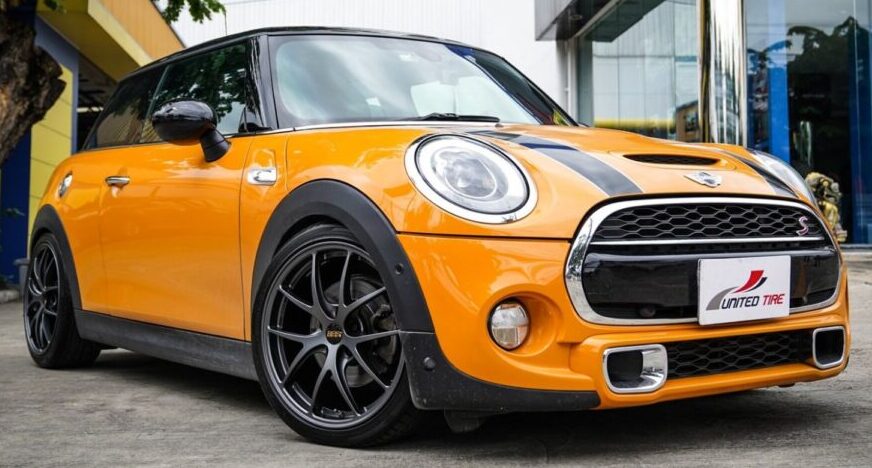Mini Cooper F56: What You need to know before buying. Part one
1. It’s not as attractive a design as the first two Minis
2. It’s reliable, economical, and tuneable
4. Rust isn’t a problem – but watch for faded plastics
It’s not as attractive a design as the first two Minis
What you need to know before buying Mini Cooper F56. Part one. When considering the design of the Mini Cooper F56 in comparison to its predecessors, it’s important to acknowledge the evolution of Mini’s styling over the years. The classic Mini, introduced in the 1960s, became an automotive icon with its charming, compact design that emphasized functionality and efficiency. The subsequent Mini Cooper R56, released in the 2000s, retained much of the retro appeal while incorporating modern elements.
In contrast, the Mini Cooper F56, introduced in 2014, represents a departure from the strictly retro design philosophy. It retains the iconic Mini proportions but adopts a more contemporary aesthetic with larger dimensions and updated styling cues. Some enthusiasts and purists may feel that the F56 lacks the nostalgic charm of the earlier Minis, particularly with its sleeker lines and more pronounced features.
However, the F56 design also brings several advantages. Its larger size provides improved interior space and comfort compared to its predecessors. The front-end design is more aggressive, and the overall shape contributes to better aerodynamics and stability at higher speeds. The F56’s design updates reflect modern automotive trends while still paying homage to the Mini heritage.
It’s reliable, economical, and tuneable
The Mini Cooper F56 is generally regarded as a reliable, economical, and tuneable vehicle. Here’s a breakdown of these characteristics:
- Reliability: The F56 benefits from BMW’s engineering expertise, reflecting solid build quality and dependable performance. Routine maintenance and timely servicing are crucial, but overall, the F56 can be a reliable choice for daily driving.
- Economy: The Mini Cooper F56 typically offers good fuel efficiency, especially with its range of efficient turbocharged engines. This makes it economical to run, whether for city commuting or longer highway journeys.
- Tuneability: Enthusiasts appreciate the F56 for its potential for tuning and modifications. The BMW-derived engines respond well to aftermarket upgrades, allowing owners to enhance performance characteristics such as horsepower, torque, and handling.
When considering a used Mini Cooper F56, it’s important to verify its maintenance history and condition to ensure continued reliability and performance. Additionally, fuel economy can vary based on driving habits and engine choice, so it’s beneficial to research specific engine options for their efficiency. Finally, if tuning and modifications are of interest, consulting with automotive specialists can provide insights into the F56’s tuning potential and associated costs.
The ride is still firm
The firm ride of the F56 contributes to its agile and precise handling, making it enjoyable to drive on twisty roads and through corners. However, this firmness can also translate to a less cushioned ride over rough or uneven surfaces, where occupants may feel bumps and imperfections more prominently compared to softer-sprung vehicles.
For those considering a used Mini Cooper F56, it’s essential to test drive the vehicle on a variety of road conditions to assess how the firm suspension setup aligns with personal comfort preferences. Some drivers appreciate the sporty feel of the firm ride, while others may prefer a smoother and more compliant suspension setup for daily commuting or longer journeys.
Rust isn’t a problem – but watch for faded plastics
When considering the Mini Cooper F56, rust is generally not a significant issue due to improved corrosion resistance compared to older Mini models. However, it’s important to keep an eye out for faded plastics, which can be a concern on used F56 models.
Over time and with exposure to sunlight and environmental factors, certain exterior and interior plastic components on the F56, such as trim pieces, door handles, and dashboard panels, may show signs of fading or discoloration. This cosmetic issue does not typically affect the vehicle’s structural integrity or performance but can impact its overall aesthetic appeal.
To address faded plastics on a used Mini Cooper F56, various restoration techniques are available. These may include using specialized plastic restoration products or professional detailing services to rejuvenate and enhance the appearance of faded components.
When inspecting a used F56, especially in sunny climates or regions with harsh weather conditions, be attentive to the condition of plastic surfaces both inside and outside the vehicle. Addressing faded plastics can contribute to maintaining the car’s visual appeal and overall condition, enhancing the ownership experience of the Mini Cooper F56.
Are you already a proud owner of a Mini Cooper F56? If so, check out our selection of parts for this car at the following link:
https://octoclassic.com/product-category/mini/f56
Photos sources: wheelfront.com, brimmertoday.de, libraryofmotoring.info










